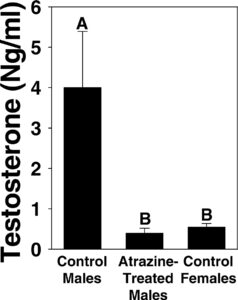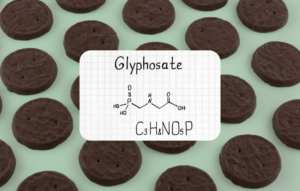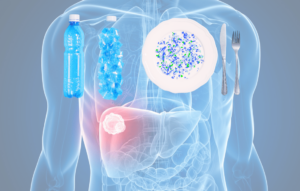Gentlemen, let’s talk about something most of us don’t want to think about: the sneaky chemicals in our environment that are messing with our hormones. No, this isn’t a conspiracy theory. This is real science, backed by real data, and it’s probably affecting your testosterone levels, your fertility, your muscle-building potential, and possibly even your future kids.
Two of the biggest culprits? Atrazine and BPA. You may not know their names, but they’re likely in your water, your food, and maybe even your protein shaker. This article is your full guide to understanding what these chemicals are, what they’re doing to your body, and how to avoid them without turning into a paranoid survivalist living in a lead-lined bunker.
Atrazine: The Masculinity-Melting Weed Killer
Atrazine is the second most commonly used herbicide in the U.S. It’s sprayed over roughly half the cornfields in America and used on everything from lawns to golf courses. It also happens to be the most commonly found pesticide in American drinking water. Fun, right?
What the Frogs Are Trying to Tell Us About Atrazine
When biologist Dr. Tyrone Hayes studied atrazine’s effect on amphibians, what he found was downright disturbing. At levels as low as 0.1 parts per billion, atrazine turned male frogs into literal egg-laying females. The reason? Atrazine activates an enzyme called aromatase, which converts testosterone into estrogen. Cue the chemical castration.
Let that sink in for a moment. A weed killer so powerful it can flip the sex of a frog — and it’s floating in our drinking water.
From Tadpoles to Testosterone

Now, we’re not frogs. But we are hormonal creatures. And what happens in frogs doesn’t stay in frogs. Hayes’ later studies found similar impacts across birds, reptiles, and mammals. In fish, rats, and yes, humans, atrazine exposure is linked to:
Impaired sexual development
Reduced testosterone
Infertility
Increased risk of prostate cancer
Holes in testicular tissue (ouch)
Oh, and just for extra horror: it’s also been tied to micropenis in newborn males when exposure happens in utero.
Atrazine and Cancer: The Risk is Real
The EPA has been all over the place with atrazine. For decades, they greenlit it. Then in 2016, they released a risk assessment that finally admitted atrazine caused reproductive harm in mammals, fish, and birds — with real-world exposure levels surpassing safety thresholds by as much as 200 times.
Various studies have associated atrazine with cancers like:
Non-Hodgkin’s lymphoma
Ovarian cancer
Thyroid cancer
Hairy-cell leukemia
And here’s the kicker: The very same company (Syngenta) that makes atrazine also makes Letrozole — an aromatase inhibitor used to treat estrogen-sensitive breast cancer. So yes, they profit off the problem and the solution.
BPA: The Plastic Plague in Your Pantry
Bisphenol A (BPA) is a synthetic estrogen used in making hard plastics and epoxy resins. It’s in your water bottles, canned food linings, receipts, and even your gym bag. BPA has been so thoroughly outed as a hormone disruptor that it was almost used for hormone replacement therapy back in the day.
It mimics estrogen in the body, binding to receptors and wreaking havoc on the endocrine system. For guys, that means lower testosterone, reduced sperm quality, and yes — man boobs. Welcome to the estrogen apocalypse.
Still Think “BPA-Free” Means Safe?
Think again. Many products now boast “BPA-free” labels. But they often use similar chemicals like BPS or BPF — which are just as bad, if not worse. According to numerous studies, these alternatives still mess with hormones and contribute to the same list of problems.
Major Sources of Atrazine and BPA
You can’t avoid what you don’t know. If you’re serious about protecting your hormones, it’s time to get familiar with where atrazine and BPA are hiding in plain sight. Here’s a quick breakdown of the most common sources of exposure.
Common Sources of Atrazine
Tap water, especially in agricultural regions (Midwest U.S.)
Corn, sugarcane, and sorghum crops treated with herbicide
Runoff from lawns, parks, and golf courses
Rain and groundwater near farmland
Conventionally raised meats (through feed contamination)
Common Sources of BPA
Canned foods and beverages (can linings)
Plastic water bottles and food storage containers
Paper receipts (thermal paper)
Takeout containers and disposable cutlery
Dental sealants and some medical devices
Plastic food wraps and microwave meals
If you’ve ever microwaved your lunch in a plastic container, you’ve likely exposed yourself to BPA. If your shower smells like a cheap inflatable pool thanks to your vinyl curtain — hello, phthalates and EDCs.
Major Sources of Atrazine and BPA
You can’t avoid what you don’t know. If you’re serious about protecting your hormones, it’s time to get familiar with where atrazine and BPA are hiding in plain sight. Here’s a quick breakdown of the most common sources of exposure.
Common Sources of Atrazine
Tap water, especially in agricultural regions (Midwest U.S.)
Corn, sugarcane, and sorghum crops treated with herbicide
Runoff from lawns, parks, and golf courses
Rain and groundwater near farmland
Conventionally raised meats (through feed contamination)
Common Sources of BPA
Canned foods and beverages (can linings)
Plastic water bottles and food storage containers
Paper receipts (thermal paper)
Takeout containers and disposable cutlery
Dental sealants and some medical devices
Plastic food wraps and microwave meals
If you’ve ever microwaved your lunch in a plastic container, you’ve likely exposed yourself to BPA. If your shower smells like a cheap inflatable pool thanks to your vinyl curtain — hello, phthalates and EDCs.
Endocrine Disruptors: Silent Saboteurs
Endocrine-disrupting chemicals (EDCs) like atrazine and BPA mimic or block your hormones. They don’t just flip one switch — they interfere with your body’s signaling system in complex and unpredictable ways.
For men, EDCs can:
Impair testicular function
Reduce sperm count and motility
Disrupt puberty and sexual development
Increase the risk of testicular and prostate cancer
Affects brain development and mood
We’re talking about subtle, chronic changes — not overnight mutation. But over time, these can accumulate into serious problems.
EDCs Are Not Just in the Lab
We’re not dealing with theoretical risks. EDC exposure is linked to:
IQ loss
ADHD and autism
Obesity and diabetes
Cardiopulmonary disease
Early death linked to low testosterone
According to a 2015 study published in The Journal of Clinical Endocrinology & Metabolism, EDCs were costing the EU over $209 billion annually in disease and disability.
So What Can You Do About It?
You’ve seen the science, you’ve felt the symptoms, and now you’re wondering — what can you realistically do about it? Good news: while you can’t live in a bubble, you can 100% outsmart these hormone hijackers.
Step One: Filter Your Water
Atrazine is most commonly found in tap water. The good news? It’s relatively easy to filter out.
Use a carbon-based filter certified to remove VOCs (volatile organic compounds)
Look for NSF/ANSI 53 certification
Consider whole-house filters or under-sink reverse osmosis if you’re serious
Step Two: Eat Like You Care About Your Testosterone
Go organic as often as possible, especially with the Dirty Dozen
Avoid processed food — it’s often full of EDCs, pesticides, and phthalates
Eat fermented foods like kimchi and sauerkraut to help your body detox
Load up on antioxidants like lycopene (found in tomatoes, watermelon, and red peppers)
Step Three: Break Up with Plastic
Use glass or stainless steel water bottles
Store food in glass, not plastic
Ditch canned goods or buy BPA-free, lined cans from reputable brands
Never microwave food in plastic containers or with plastic wrap
Step Four: Clean Smarter, Groom Smarter
Switch to natural cleaning products
Use EWG’s Skin Deep database to find safer personal care products
Avoid artificial fragrances, air fresheners, and scented dryer sheets
Skip anything with “phthalates,” “parabens,” or “fragrance”
Step Five: Be Wary of Labels
“BPA-Free” doesn’t mean EDC-free
“Natural” doesn’t mean safe — always check the ingredients
Ask your farmers about pesticide use even if they’re not certified organic
Real Talk: Why This Matters for Men
It’s Not Just About Fertility
Sure, no guy wants to hear the words “micropenis” or “testicular atrophy,” but let’s be clear — this isn’t just about your ability to reproduce. It’s about:
Your muscle mass
Your mental clarity
Your motivation and drive
Your ability to focus, compete, and perform
When testosterone drops and estrogen dominates, you don’t just lose gains — you lose yourself. The modern man is facing a hormonal identity crisis, and it’s not just from soy lattes and desk jobs.
You’re Not Crazy. You’re Contaminated.
If you’ve been feeling more sluggish, foggy, emotional, or less… manly, there’s a very real chance that what’s in your environment is affecting your biology.
No, this isn’t about fearmongering — it’s about awareness. You don’t need to live off-grid and bathe in spring water (though it wouldn’t hurt), but you do need to start caring. Because pretending it’s not happening doesn’t protect your body — it just makes you easier to poison.
Final Thoughts: Be the Guardian of Your Genes
We live in a world filled with chemicals our ancestors never had to deal with. That means the responsibility is on us to read the labels, ask the questions, and make better choices.
Whether you’re hoping to become a father, perform better in the gym, or just keep your body functioning like it’s supposed to, avoiding EDCs like atrazine and BPA should be on your radar.
It’s not about being paranoid. It’s about being proactive.
Your hormones are under attack. It’s time to fight back.














